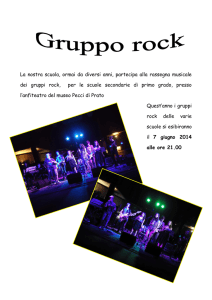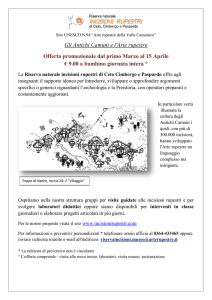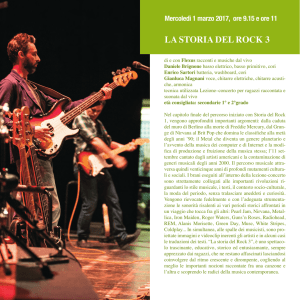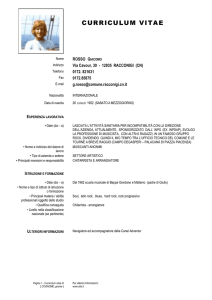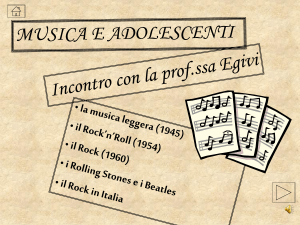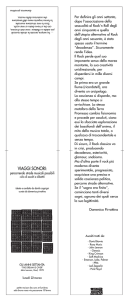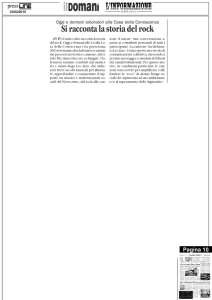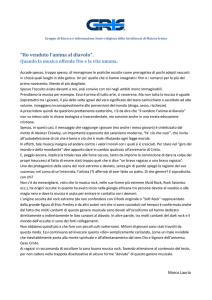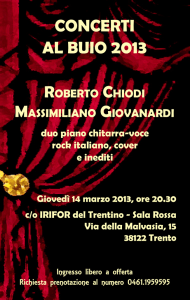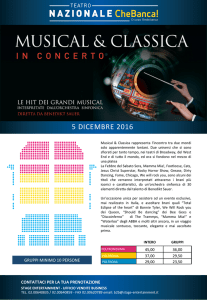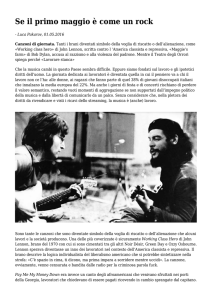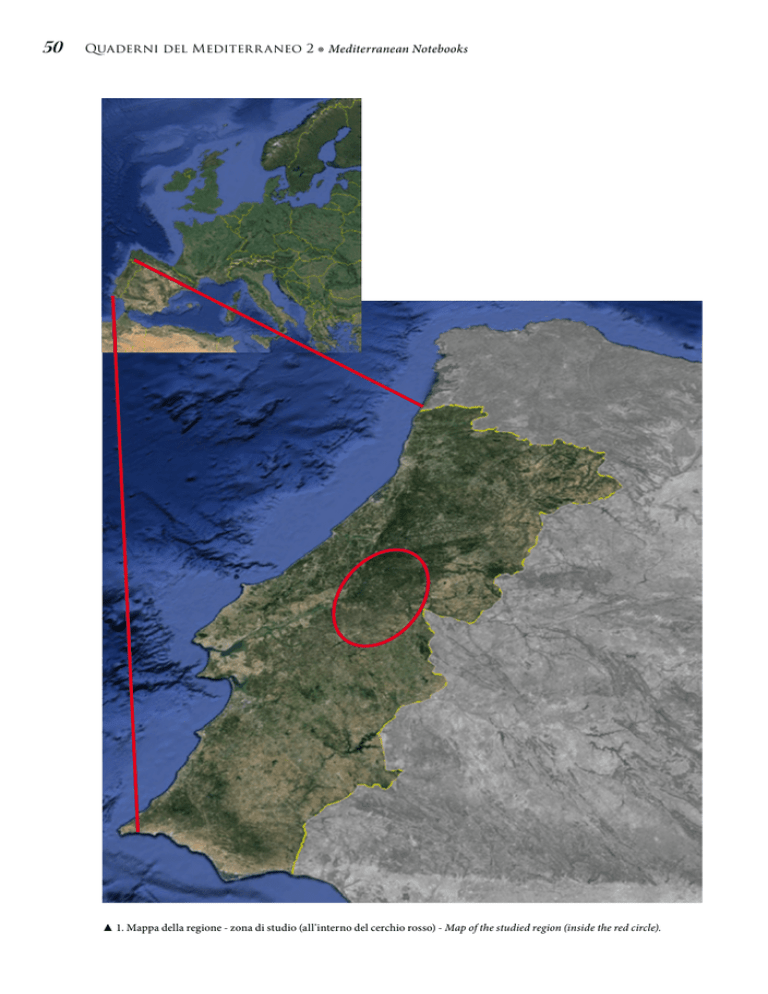
50
Quaderni del Mediterr aneo 2 ◉ Mediterranean Notebooks
▲ 1. Mappa della regione - zona di studio (all'interno del cerchio rosso) - Map of the studied region (inside the red circle).
Le due missioni a Filippi (anni 2005-2006) ◉ The two missions in Philippi (years 2005-2006)
2. Arte rupestre filiforme e a “polissoir” tra i fiumi
Tago e Mondego (Portogallo):
Inventario, tipologia, paralleli e cronologia
INCISED ROCK ART BETWEEN THE TAGUS AND
MONDEGO RIVERS (PORTUGAL):
Inventory, typology, parallels and chronology
Fernando Coimbra
Centro Português de Geo-História e Pré-História - Grupo Quaternário e Pré-História do
Centro de Geociências (u. ID73 - FCT) - Instituto Terra e Memória
Sara Garcěs
Grupo Quaternário e Pré-História - do Centro de Geociências (u. ID73 - FCT)
Bolseira FCT (SFRH/BD/69625/2010) - Instituto Terra e Memória
INTRODUZIONE
Introduction
Note: In other articles in English, we called
“incised” to the rock art studied here. However, in Italian, the translation would provoke
misunderstanding. So we decided to classify,
in this article written in two languages, the
studied examples as “filiform and polissoir
rock art1”.
L'area studiata in questo articolo corrisponde al medio bacino dei fiumi Tago e
Mondego in Portogallo (Fig.1), essendo la
sua geologia caratterizzata principalmente
da rocce di scisto e grovacca.
L'arte rupestre che appare su queste superfici è prodotto da linee realizzate con una
pietra o un attrezzo metallico, più duro della
roccia.
I motivi rappresentati nelle incisioni rupestri appaiono sia con scanalatura sottile (filiforme1) o con scanalatura medio / spessa.
Questa distinzione è stata raramente menzionata nella bibliografia pubblicata, salvo il caso
di A. Domínguez García e Mª Amparo Aldecoa Quintana (2007), oltre ai nostri articoli.
The area studied in this article corresponds to the middle basin of the Tagus and
the Mondego rivers in Portugal (Fig.1), being
its geology characterized mainly by schist
greywacke rocks.
The rock art which appears on these surfaces is produced by carved lines made with
a stone or a metal tool, harder than the rock.
1. La parola filiforme deriva dal termine latino
filium (molto sottile, come un capello) e forma
(forma). Così non è appropriato denominare
"filiforme" un motivo fatto con una scanalatura più
spessa.
1. The word filiform comes from the Latin filium
(very thin, like an hair) and forma (shape). Thus
it’s inappropriate to denominate “filiform” a motif
done with a medium or a thick groove.
51
52
Quaderni del Mediterr aneo 2 ◉ Mediterranean Notebooks
I motivi filiformi sono solo graffiti sulle
superfici rocciose, mentre gli altri vengono prima incisi e poi ripassati con movimenti ripetuti, con l'uso di una tecnica di
"polissoir".
L’arte rupestre filiforme e a polissoir può
essere trovata con una tipologia comune in
molti paesi dell'Europa meridionale, soprattutto in alcune regioni del Portogallo (Trásos-Montes, Alto Douro, Beira Interior, Alentejo), Spagna (Extremadura, Castilla y Léon,
Cataluña), Andorra, Francia (Pirenei orientali, Alpi francesi, Corsica) e Italia (Liguria,
Val d'Aosta, Piemonte, Lombardia, Puglia,
Sardegna). Alcune figure appaiono anche,
ma meno frequentemente, in Austria, Kosovo, ex Repubblica jugoslava di Macedonia,
la Grecia e la Romania (COIMBRA, 2013b).
Nella prima parte di questo articolo descriviamo l'inventario di arte rupestre incisa rilevata tra i fiumi Tago e Mondego. In secondo
luogo si stabilisce la sua tipologia, indicando
anche alcuni paralleli in Europa. Una terza
parte riguarda la problematica della cronologia di questo tipo di arte e dei risultati delle
recenti scoperte che possono meglio chiarire
la datazione di alcuni esempi.
In un prossimo futuro programmeremo
di effettuare la tracciatura di notte con luce
artificiale e cioè sulle rocce, note da diversi
decenni come Pedra Letreira de Góis, perché
potrebbero rilevarsi alcuni motivi molto sottili (e probabilmente non ancora rilevati). La
stessa procedura sarà applicata a sovrapposizioni che appaiono su Roccia 1 da Figueiredo.
The motives appear either with very thin
or with medium/thick grooves, being the
first usually called filiform and the second
“polissoir”. The distinguishing regarding the
grooves’ thickness has been rarely mentioned
in the published bibliography, except for the
case of A. Domínguez García and Mª Amparo
Aldecoa Quintana (2007), besides our own
articles.
Filiform motives are just scratched on the
rock surfaces, while the others are first carved
and then polished with repeated movements,
after the use of a “polissoir” technique.
Filiform and polissoir rock art can be found
with a common typology in many countries
from Southern Europe, mainly in several regions from Portugal (Trás-os-Montes, Alto
Douro, Beira Interior, Alentejo), Spain (Extremadura, Castilla y Léon, Cataluña), Andorra, France (Eastern Pyrenees, French
Alps, Corsica) and Italy (Liguria, Val d’Aosta,
Piemonte, Lombardy, Puglia, Sardinia). Some
motives appear also, but less frequently, in
Austria, Kosovo, FYR of Macedonia, Greece
and Romania (COIMBRA, 2013b).
In the first part of this article we make the
inventory of the filiform and polissoir rock
art which exists between the Tagus and the
Mondego rivers. Secondly we establish its typology, indicating also some parallels in Europe. A third part concerns the problematic
of the chronology of this kind of art and the
results of recent discoveries which can better
elucidate the dating of some examples.
In a near future we plan to do night tracing
with artificial light namely in rocks published
several decades ago such as Pedra Letreira de
Góis, because some motives very thin (and
probably not yet seen) may occur. The same
procedure will be applied to superimpositions
that appear on Rock 1 from Figueiredo.
Le due missioni a Filippi (anni 2005-2006) ◉ The two missions in Philippi (years 2005-2006)
2. INVENTARIO
Inventory
L'elenco dei siti con incisioni rupestri filiformi e a polissoir è presentato qui da Nord
a Sud della zona studiata, con esempi dei
distretti di Coimbra, Castelo Branco, Santarém e Portalegre.
1.1 - Distretto di Coimbra
In questo distretto, l’arte rupestre appare
in due comuni: Góis e Pampilhosa da Serra.
1.1.1 - Comune di Góis
In questa zona vi è una pietra molto importante, stranamente studiata solo alla fine
degli anni Cinquanta (BARROS et alli, 1959),
senza indagini più recenti. E’ nota come Pedra Letreira, che significa “pietra con lettere”, perché l’immaginazione popolare ha
interpretato i segni scolpiti sulla superficie
della roccia come un antico alfabeto.
I motivi consistono principalmente sulle
punte di freccia e reticoli, esiste anche un arco
con la freccia2 e due possibili scudi (Fig.2).
1.1.2 - Comune di Pampilhosa da Serra
Nel territorio del comune di Pampilhosa
da Serra, le rocce con motivi filiformi sono
tre: Roccia 5 da Cabeço do Malhadinho, Roccia 3 e Roccia 9 da Pico da Cebola3. Secondo
Batata e Gaspar (2011), la prima presenta
2. Il disegno del 1959 mostra due archi con la
freccia. Tuttavia una grande crepa, prodotta probabilmente da un incendio e non registrata sul
disegno, occupa l'area del secondo arco, che non
esiste più.
3. Questa roccia è stato scoperta in una zona
dove otto rocce con motivi a martellina sono stati
identificati da Batata & Gaspar ( 2011). Dal momento che è la nona roccia in questo complesso,
abbiamo deciso di seguire la numerazione di
quegli autori.
The list of sites with filiform and polissoir rock art
is presented here from North to South of the studied
area, with examples from the districts of Coimbra,
Castelo Branco, Santarém and Portalegre.
1.1 - District of Coimbra
In this District, this kind of rock art appears in
two municipalities: Góis and Pampilhosa da Serra.
1.1.1 - Municipality of Góis
In this area there is one very important rock,
strangely studied only in the end of the fifties (BARROS et alli, 1959), without more recent surveys. It’s
called Pedra Letreira, meaning stone with letters,
because popular mentality interpreted the signs
carved on the rock surface as an ancient alphabet.
The motives consist mostly on arrow heads and
net-patterns, existing also a bow with arrow2 and
two possible shields (Fig.2).
1.1.2 - Municipality of Pampilhosa da Serra
In Pampilhosa da Serra, the rocks with filiform
motives are three: Rock 5 from Cabeço do Malhadinho, Rock 3 and Rock 9 from Pico da Cebola3.
According to Batata & Gaspar (2011) the first one
presents several thin motives, which are difficult to
characterize due to several lichen that cover part of
them. Rock 3 from Pico da Cebola has also filiform
engravings among which the same authors identified a cross and a “D”. Rock 9 from Pico da Cebola
2. The drawing from 1959 shows two bows with
arrow. However a big crack, produced possibly
by a forest fire and not recorded on the drawing,
occupies the area of the second bow, which
doesn’t exist anymore.
3. This rock was discovered in an area where
eight rocks with pecked motives were identified
by Batata & Gaspar (2011). Since it’s the 9th
rock in this complex, we decided to follow the
counting of those authors.
53
54
Quaderni del Mediterr aneo 2 ◉ Mediterranean Notebooks
▲ 2.Punte di freccie (Pedra Letreira de Gois) – Arrow heads (Pedra letreira de Gois)
diversi motivi filiformi, che sono difficili da
interpretare a causa di diversi licheni che coprono una parte di essi. Roccia 3 da Pico da
Cebola ha anche incisioni filiformi tra cui gli
stessi autori hanno individuato una croce e
una "D". La Roccia 9 da Pico da Cebola ha linee parallele e una possibile zig-zag, oltre ad
altri motivi metà ricoperti di licheni. Questa
roccia è un nuovo caso di incisioni filiformi,
recentemente scoperto da F. Coimbra e S.
Garcês e non ancora studiato.
1.2 - Distretto di Castelo Branco
Testimonianze di arte rupestre nel distretto di
Castelo Branco sono state ritrovate nei comuni
di Oleiros, Sertã e Proença-a-Nova. Sertã ha due
delle più importanti rocce della zona studiata, a
causa della varietà di segni e anche per la rarità
di alcuni di essi, come verrà descritto più avanti.
1.2.1 - Comune di Oleiros
Nella zona orientale della Serra do Cabeço
Rainho, nel sito chiamato Alto do Pobral, c'è una
roccia con motivi filiformi, costituito da due pic-
has parallel lines and a possible zig-zag, besides
other motives half covered with lichen. This rock is a
new case of filiform engravings, recently discovered
by F. Coimbra and S. Garcês but not yet properly
studied.
1.2 - District of Castelo Branco
The filiform and polissoir rock art from
Castelo Branco can be seen in the municipalities of Oleiros, Sertã and Proença-a-Nova.
Sertã has two of the most important rocks of
the studied area, due to the diversity of motives and also to the rarity of some of them, as
it will be explained later.
1.2.1 - Municipality of Oleiros
In the Eastern area of Serra do Cabeço
Rainho, at the place called Alto do Pobral,
there’s a rock with filiform motives, consisting of two small broken lines, which may constitute a small zigzag, or, in the opinion of its
discoverers, may represent the letter M of an
eventual Roman inscription (CANINAS et
alli, 2004). However, in Rock 2 from Figue-
Le due missioni a Filippi (anni 2005-2006) ◉ The two missions in Philippi (years 2005-2006)
cole linee spezzate, che possono costituire un piccolo zig-zag, o, secondo il parere dei suoi scopritori, può rappresentare la lettera M di un eventuale
iscrizione romana (CANINAS et alli, 2004). Tuttavia, sulla Roccia 2 da Figueiredo (Sertã), ci sono
due motivi simili con la stessa patina di altre incisioni di una chiara cronologia pre-romana, non
si tratta, in questo caso, della rappresentazione di
una lettera (COIMBRA - GARCÊS, 2013).
1.2.2 - Comune di Sertã
In questo comune sono state rilevate tre rocce
con motivi filiformi e a polissoir nella parrocchia
di Figueiredo. Su Roccia 1, alcune delle incisioni
sono state realizzate con scanalature media / spessa: un ascia senza manico, un albero, due pentagrammi, diversi reticoli, scalariformi, rettangoli
e quadrati di tipologia diversa, e linee parallele
e convergenti. C'è anche una possibile vulva, un
possibile scudo e quattro iscrizioni, essendo due di
loro preromana e gli altri di epoca romana.
Altre incisioni sono state eseguite con la tecnica
filiforme: due punte di freccia, due pentagrammi,
un albero, un zigzag, diversi reticoli, rettangoli e
quadrati, e gruppi di linee parallele e convergenti.
Ci sono diverse sovrapposizioni di incisioni
(Fig. 3), essendo uno di loro fatto con un motivo
databile4.
La Roccia 2 di Figueiredo è stata scoperta inaspettatamente da uno di noi (F. Coimbra) e C. Batata, durante una visita a Roccia 1 nel 2004, al fine
di realizzare le fotografie per una pubblicazione.
Un recente incendio boschivo aveva bruciato la
vegetazione intorno a questa pietra, che è piatta a
terra, e ha permesso di identificare alcuni motivi
filiformi. Solo quattro anni più tardi, nel quadro
del Progetto Ruptejo, c'era la possibilità di studiare
questa nuova roccia (Fig.4), che doveva essere accuratamente scavata, con strumenti di legno e di
plastica, perché era coperta di terra5 nella maggior
parte della sua area.
iredo (Sertã), there are two similar motives
with the same patina of other engravings of
a clear pre-Roman chronology, not being, in
this case, the representation of a letter (COIMBRA & GARCÊS, 2013).
1.2.2 - Municipality of Sertã
This municipality has three rocks with filiform and polissoir motives in the parish of
Figueiredo. In Rock 1, some of the engravings
were made with medium/thick grooves: an
axe without handle, a tree like motif, two pentagrams, several net-patterns, scalariforms,
rectangles and squares of diverse typology,
parallel and convergent lines. There’s also a
possible vulva, a possible shield and four inscriptions, being two of them pre Roman and
the others from the Roman Period.
Other engravings were made with filiform
technique: two arrow heads, two pentagrams,
a tree like motif, a zigzag, several net-paterns,
rectangles and squares, and groups of convergent and parallel lines.
There are several superimpositions of engravings (Fig. 3), being one of them made with
a datable4 motif .
Rock 2 from Figueiredo was discovered unexpectedly by one of us (F. COIMBRA) and
by C. Batata, during a visit to Rock 1 in 2004,
in order to make photographs for publication.
A recent forest fire had burned the vegetation
around this rock, which is flat to the ground,
and allowed to identify some filiform motives.
Only four years later, within the framework of
the Ruptejo Project, there was a possibility to
study this new rock (Fig.4), which had to be
carefully excavated, with plastic and wooden
tools, because it was covered with ground5 in
most of its area.
4. E' il caso di un rettangolo con linee interne, al
di sotto un'iscrizione romana del 1° secolo dC,
che costituisce un terminus ante quem per la sua
cronologia.
4. It’s the case of a rectangle with internal lines,
below a Roman inscription from the 1st century
AD, which constitutes a terminus ante quem for
its chronology.
5. Questo ha contribuito alla buona conservazione
delle incisioni.
5. This fact contributed for the good conservation
of the engravings.
55
56
Quaderni del Mediterr aneo 2 ◉ Mediterranean Notebooks
▲ 3. Sovrapposizioni nella Roccia 1 da Figueiredo.
Rosso: punta di freccia, scudo (?) e iscrizione preromana.
Arancio: rettangolo con linee interne sottoposto per la iscrizione romana MIITAMVS. Negro: altri motivi.
Red: Arrow head, shield (?) and pre Roman inscription.
Orange: rectangle with internal lines overlapped by the Roman inscription MIITAMVS. Black: other motives.
Questa roccia ha rivelato motivi filiformi
come ad esempio: una figura antropomorfa a
croce, zig-zag (semplice e doppio), un triangolo (pugnale?), pentagrammi, un arco con
la freccia (Fig. 5) e un "asterisco". Presenta
anche incisioni con scanalature di medio
spessore, come: rettangoli, scalariformi, cruciformi, linee parallele e convergenti.
La Roccia 3 di Figueiredo è stato scoperta nelle stesse condizioni di Roccia 2 ed era
anche necessario scavare il sito attentamente, quello che è stato fatto anche nel 2008. E’
la più piccola e la meno importante roccia di
questa zona, avendo solo alcune incisioni filiformi senza presentare alcun motivo comprensibile.
1.2.3 - Comune di Proença-a-Nova
Presso Várzea Grande, parrocchia di Pro-
This rock revealed filiform motives such as:
a cruciform anthropomorphic figure, zigzags
(simple and double), a triangle (dagger?), pentagrams, a bow with arrow (Fig. 5) and an “asterisk”. It has also engravings with medium/
thick grooves, like: rectangles, scalariforms,
cruciforms, parallel and convergent lines.
Rock 3 from Figueiredo was discovered
in the same conditions of Rock 2 and it was
also necessary to be carefully excavated,
what take place also in 2008. It’s the smaller and the less important rock of this area,
having only some filiform incisions without making any understandable motif.
1.2.3 - Municipality of Proença-a-Nova.
In the place of Várzea Grande, parish of
Proença-a-Nova, there’s “Pedra das Letras”
(stone with letters). It was discovered in 1939
Le due missioni a Filippi (anni 2005-2006) ◉ The two missions in Philippi (years 2005-2006)
▲ 4. Roccia 2 da Figueiredo dopo gli scavi - Rock 2 from Figueiredo after excavation.
▲ 5/5A - Arco con freccie di tipo filiforme. Foto e rilievo - Filiform bow with arrow. Photo and tracing.
57
58
Quaderni del Mediterr aneo 2 ◉ Mediterranean Notebooks
ença-a-Nova, è situata "Pedra das Letras"
(pietra con le lettere). E' stata scoperta nel
1939 da padre Henrique Louro, che ha interpretato le incisioni come caratteri di scrittura iberica. I motivi scolpiti consistono in
gruppi di linee parallele e convergenti realizzati con scanalature medio/spesse (Fig. 6).
Un rilievo completo è stato effettuato nel
1991 da Thomas Bubner, essendo i disegni
conservati presso il Laboratorio di Arte Rupestre da Instituto Terra e Memoria (Mação,
Portogallo).
Più recentemente questa roccia fu profondamente studiata da F. Henriques e JC Caninas
(2009).
Secondo le informazioni personali del Presidente della Parrocchia di São Pedro do Esteval
(comune di Proença-a-Nova), c'erano alcune
incisioni in un'area attualmente sommersa dalle
acque della diga di Pracana. Pertanto, altre incisioni potranno apparire se, in futuro, sarà possibile abbassare il livello delle acque della diga.
1.3 - Distretto di Santarém
In questa area, solo il comune di Mação ha
testimonianze di arte rupestre. Essa può essere
vista in due siti: vicino al fiume Ocreza e, fino al
nord, a Ribeira de Pracana un piccolo affluente
del Ocreza.
by father Henrique Louro, which interpreted
the engravings as characters of Iberian writing. The carved motives consist in sets of
parallel and convergent lines made with medium/thick grooves (Fig.6). A full tracing was
carried out in 1991 by Thomas Bubner, being
the drawings kept in the Laboratory of Rock
Art from Instituto Terra e Memória (Mação,
Portugal). More recently this rock was deeply
studied by F. Henriques e J.C. Caninas (2009).
According to personal information from the
President of the Parish of São Pedro do Esteval (municipality of Proença-a-Nova), there
were some engravings in an area currently
submerged by the waters of the dam of Pracana. This way, more filiform and polissoir
engravings (or pecked) can appear if, in the
future, it will be possible to low the level of the
waters from the dam.
1.3 - District of Santarém
In this district, only the municipality of
Mação has evidences of rock art. It can be
seen in two places: near the river Ocreza and,
up to the north, in Ribeira de Pracana a small
tributary of the Ocreza.
1.3.1 - Fiume Ocreza
La prospezione effettuata nel 2001, nel quadro
degli studi riguardanti l'impatto ambientale causato dalla costruzione dell’ autostrada A23, ha
permesso di scoprire alcune rocce con incisioni filiformi. Vicino alla linea d'acqua del fiume
Ocreza sono stati identificati sette6 rocce: Rocce
1, 4, 5, 6, 7, 9 e 13 (Oosterbeek, 2003). Le Rocce
4, 5, 6 e 7 presentano solo alcune linee filiformi
senza costituire un motivo noto. La Roccia 1 ha
una incisione triangolare, che secondo alcuni autori può essere la rappresentazione di un pugnale
(Oosterbeek, 2002; 2003), un esempio simile
1.3.1 - River Ocreza
Prospecting carried out in 2001, in the
framework of the studies regarding the environmental impact caused by motorway A23,
allowed to discover some rocks with filiform
engravings. Close to the water line of river
Ocreza seven rocks6 were identified: Rocks 1,
4, 5, 6, 7, 9 and 13 (Oosterbeek, 2003). Rocks
4, 5, 6 and 7 present only some filiform lines
without constituting a known motif. Rock 1
has a triangular engraving, which according to some authors can be the depiction of a
dagger (Oosterbeek, 2002; 2003), existing a
similar example on Rock 2 from Figueiredo
(Sertã). The engravings from Rock 9 consist in
a set of parallel lines, while on Rock 13 it’s pos-
6. Altre rocce, non menzionate qui, presentano
motivi a martellina, e non sono considerate in
questo articolo.
6 Other rocks, not mentioned here, present
pecked motives, which are not considered in this
article.
Le due missioni a Filippi (anni 2005-2006) ◉ The two missions in Philippi (years 2005-2006)
esistente in Roccia 2 da Figueiredo (Sertã). Le
incisioni di Roccia 9 consistono in una serie di
linee parallele, mentre sulla Roccia 13 è possibile
osservare una sorta di "asterisco" (Coimbra &
Garcês 2013: Fig. 2).
1.3.2 - Ribeira de Pracana
In questa zona della Valle Ocreza due rocce
devono essere considerate: Roccia 12 e Roccia
21. La prima presenta molte linee filiformi senza
costituire un motivo.
Nella seconda, c'è una serie di linee parallele e
una possibile freccia (Monteiro; Gomes 19741977). Questa roccia, che ha anche un centinaio
di coppelle a martellina, è molto vicino alla linea
di livello d’acqua e nei periodi di maggiore flusso
resta parzialmente sommersa, ciò che aumenta
la sua erosione.
1.4 - Distretto di Portalegre
Come Santarém, nel distretto di Portalegre le testimonianze di arte rupestre
▲ 6. - Pedra das Letras, Proença-a-Nova.
sible to observe a sort of "asterisk” (Coimbra
& Garcês, 2013, Fig. 2).
1.3.2 - Ribeira de Pracana
In this area of the Ocreza Valley two rocks
must be considered: Rock 12 and Rock 21. The
first presents many filiform lines without constituting a motif. In the second, there’s a set
of parallel lines and a possible arrow (Monteiro; Gomes 1974-1977). This rock, which
has also about a hundred pecked cup-marks,
is very close to the water line and in times of
bigger flow it becomes partially submerged,
what increases its erosion.
1.4 - District of Portalegre
Like Santarém, the district of Portalegre
has only one municipality with filiform and
polissoir rock art: Nisa. In this county, the filiform rock art know so far can be observed on
59
60
Quaderni del Mediterr aneo 2 ◉ Mediterranean Notebooks
sono concentrate in un solo comune: Nisa.
In questa regione, l'arte rupestre si può osservare sulla roccia 168A di São Simão.
Esso consiste in una serie di linee parallele molto sottili individuati da C. Chippindale nel mese di aprile del 2007, durante una
visita del X° Corso Intensivo di Arte Preistorica Europea7. Su una parete verticale di
questa roccia ci sono tre zigzag filiformi di
cronologia sconosciuta, poiché sono senza
alcuna associazione, pur essendo un motivo
che appare frequentemente in altre incisioni
attribuite a età del bronzo e dell'età del ferro.
Dal 1974, circa l'80% al 90% dell'arte rupestre della Valle del Tago è sommerso dalle
acque della diga di Fratel. In questo modo,
altre incisioni filiformi avrebbero potuto
presentarsi non essendo stato rilevate dai ricercatori dagli anni settanta, che dovevano
lavorare in fretta (a causa della diga), e il più
delle volte con la luce insufficiente per identificare i motivi filiformi.
7. Il corso è stato organizzato dal Politecnico di
Tomar.
Rock 168A of São Simão. It consists in a set of
very thin parallel lines identified by C. Chippindale in April of 2007, during a visit of the
10th Intensive Course of European Prehistoric
Art7. On a vertical part of this rock there are
three filiform zigzag of unknown chronology,
since they occur without any associations, in
spite of being a motif which appears frequently with other engravings attributed to Bronze
Age and to Iron Age.
Since 1974, about 80% to 90% of the rock
art from the Tagus valley is submerged by
the waters of the Fratel dam. This way, more
filiform engravings could have had occur, not
having been detected by the researchers from
the seventies, which had to work in a rush (because of the dam) and most of the times with
inadequate light to identify very thin motives.
7. This course was organized by the Polytechnic
Institute of Tomar
Le due missioni a Filippi (anni 2005-2006) ◉ The two missions in Philippi (years 2005-2006)
2. TIPOLOGIA E PARALLELI
Typology and parallels
I motivi esistenti nell'area geografica analizzata sono tipologicamente molto diversi,
come ad esempio: scalariformi, croce, zig-zag
(semplice e doppio), pentagrammi, rettangoli,
quadrati, reticoli, arbolet, figure antropomorfe
schematiche, idoli, armi (asce, pugnali, punte
di freccia, arco), "asterischi", linee parallele e
convergenti, linee parallele, "angoli", iscrizioni
pre-romane e romane, tra altre figure di definizione più difficile (Coimbra e Garcês, 2013).
Si può notare che tra i fiumi Tago e Mondego
l’ arte rupestre è soprattutto schematica, nonostante alcuni esempi "più naturalistici", ma rari,
di armi.
Al contrario, nella valle del Douro e nella Valle
del Côa, l'arte rupestre con una analoga cronologia degli esempi analizzati in questo articolo
ha molti esempi di stile naturalistico, come cavalieri, guerrieri, cavalli, cervi, cani (Baptista,
1986) tra l'altro, nonostante vari esempi di tipo
schematico e geometrico (Baptista & Reis,
2008).
Motivi come reticoli, zig-zag, pentagrammi,
scalariformi, "asterischi", crucimorfi, alberi e
punte di freccia (Tabella 1) appaiono frequentemente con una tipologia simile in paesi come
Portogallo, Spagna, Andorra, Francia e Italia,
cosa che può derivare dai contatti di popoli diversi in tarda preistoria, spiegazione che
sembra logica per l'esistenza di queste figure
in regioni che sono lontane le une dalle altre.
Altrimenti parrebbe una notevole coincidenza
che i popoli di tutti questi paesi abbiano deciso
di produrre tali motivi, contemporaneamente e
senza contatti reciproci, dal momento che alcuni dei motivi citati si possono trovare anche in
Kosovo, Grecia e Romania (Coimbra, 2013a).
The existing motives in the studied geographic area are typologically very different,
as for example: scalariform, cruciform, zigzags (simple and double), pentagrams, rectangles, squares, net-patterns, tree-like motives,
schematic anthropomorphic figures, idols,
weapons (axe, daggers, arrowheads, bow),
"asterisks", parallel and convergent lines, parallel lines, "angles", pre-Roman and Roman
inscriptions, among other of more difficult
definition (Coimbra & Garcês, 2013).
It can be noticed that between the Tagus and
Mondego rivers filiform and polissoir rock art
is mainly schematic, in spite of some “more
naturalistic” but rare examples of weapons.
On the contrary, in the Douro Valley and in
the Côa Valley, filiform rock art with a similar chronology of the examples analyzed in
this article has many examples of naturalistic
style, such as horse riders, warriors, horses,
deer, dogs (Baptista, 1986) among other, in
spite of several examples of schematic and
geometric type (Baptista & Reis, 2008).
Figures such as net-patterns, zigzag, pentagrams, scalariforms, “asterisks”, cruciforms,
tree like motifs and arrow heads (Table 1)
appear frequently with a similar typology
in countries like Portugal, Spain, Andorra,
France and Italy, what can result from contacts of different peoples in Late Prehistory, seeming to be a logical explanation for
the existence of these figures in regions that
are far from each other. Otherwise it would
have been a very big coincidence that peoples
from all of these countries decided to produce
such motives, at the same time and without
any mutual contacts, since some of the mentioned figures can also be found in Kosovo,
Greece and Romania (Coimbra, 2013a).
61
62
Quaderni del Mediterr aneo 2 ◉ Mediterranean Notebooks
Uno dei motivi che compare più frequentemente in Europa occidentale è il pentagramma, con esempi in Portogallo (Alentejo, Beira Interior, Alto Douro), Spagna
(Extremadura, Castilla y Leon), Andorra,
Francia (Pirenei Orientali, il Monte Bego),
Italia (Liguria, Lombardia, Puglia). Esso è
presente anche in Austria e Romania.
Questa figura è rappresentata sia con una
scanalatura sottile (Fig. 7) o una scanalatura
più spessa (Fig. 8), essendo questa situazione
comune con quasi tutti i motivi esistenti di
arte rupestre filiforme e a polissoir.
▲ 7. - Pentagramma filiforme, Roccia 1 da Figueiredo
Filiform pentagram, Rock 1 from Figueiredo
One of the motives which appears more frequently in Western Europe is the pentagram,
with examples in Portugal (Alentejo, Beira
Interior, Alto Douro), Spain (Extremadura,
Castilla y Leon), Andorra, France (Eastern
Pyrenees, Mont Bego), Italy (Liguria, Lombardy, Puglia). It can also be seen in Austria
and Romania. This figure is depicted either
with a thin groove (Fig. 7) or a medium/thick
groove (Fig. 8), being this situation common
with almost all of the existing motives in filiform and polissoir rock art.
Le due missioni a Filippi (anni 2005-2006) ◉ The two missions in Philippi (years 2005-2006)
▲ 8.Pentagramma inciso con scanalatura spessa - Pentagram carved with a thick groove
Il reticolo è un altro dei temi più rappresentati in questo tipo di arte, che appare in
Portogallo Alentejo, Beira Interior (Fig. 9) e
Trás-os-Montes. In Spagna sono molto comuni nella regione di Extremadura, essendo presente in circa 40 rocce (Domínguez
García - Aldecoa Quintana, 2007). In
Andorra appaiono in Tossal de Cava e Encamp (Casamajor, 2008).
Al di fuori della Penisola Iberica, questo
motivo è presente, con la stessa tipologia,
in diverse rocce dei Pirenei francesi orientale (Abelanet, 1990) e dal Monte Bego
(De Lumley, 1995). In Italia, il reticolo appare nel comune di Issogne (Valle d'Aosta)
(Colella, 2005), Foppe di Nadro (Valcamonica) (Marretta, 2007), Piancogno
(Valcamonica) (Priuli, 1993), al riparo
di Cavone (Bari) (Astuti et alli, 2008), e
anche sul Monte Beigua (Savona), in Lunigiana e in Sardegna, essendo presente
anche in Kosovo, a Zatriqi (Thaqi, 2007).
Scalariformi (o motivi simili a scaletta) possono essere trovati: in Portogallo (Alentejo,
The net-pattern is another of the most depicted themes in this kind of art, appearing
in Portugal at Alentejo, Beira Interior (Fig. 9)
and Trás-os-Montes. In Spain they are very
common in the region of Extremadura, being present on about 40 rocks (DOMÍNGUEZ
GARCÍA & ALDECOA QUINTANA, 2007).
In Andorra they appear at Tossal de Cava and
Encamp (Casamajor, 2008).
Outside the Iberian Peninsula, this motif
is present, with the same typology, on several rocks from the French Eastern Pyrenees
(ABÉLANET, 1990) and from Mont Bego (DE
LUMLEY, 1995). In Italy, the net-pattern appears at Issogne (Val d’Aosta) (COLELLA,
2005), Foppe di Nadro (MARRETTA, 2007),
Piancogno (PRIULI, 1993), at the rockshelter
of Cavone (Bari) (ASTUTI et alli, 2008), and
also in Monte Beigua (Savona), Lunigiana
and Sardinia, being also present in Kosovo, at
Zatriqi (THAQI, 2007).
Scalariforms (or ladder-like motives) can
be found: in Portugal (Alentejo, Beira Interior
and Trás-os-Montes); Spain at the Province of
63
64
Quaderni del Mediterr aneo 2 ◉ Mediterranean Notebooks
▲ 9. Reticolo (sinistra) e altre figure. Roccia 1 da Figueiredo, Portogallo.
Net-pattern (left) and other figures. Rock 1 from Figueiredo, Portugal.
Beira Interior e Trás-os-Montes); in Spagna presso la Provincia di Badajoz (Domínguez García e Aldecoa Quintana, 2007); in Andorra
(Canturri Montanya, 1974; Mas, 1977) e nella Corsica (Colella, 2005). In Italia sono presenti in Val Fredda (Trento) (Dalmeri, 2005),
nel comune di Issogne (Valle d'Aosta), (Colella, 2005) e sul Monte Beigua (Savona) (Prestipino, 2010), visto da uno di noi (F. Coimbra)
alla Roccia del Dolmen, nel 2008 e nel 2013.
Il segno zigzag appare in Portogallo (Trás-osMontes e Beira Interior), Spagna (Extremadura, Castilla y Leon), Andorra, Francia (Pirenei
Orientali, Monte Bego) e Italia (Lombardia,
Badajoz (Domínguez García & Aldecoa
Quintana, 2007), appearing also in Andorra
(Canturri Montanya, 1974; Mas, 1977)
and Corsica (Colella, 2005B). In Italy they
are present at Val Fredda (Trento) (Dalmeri, 2005) at Issogne (Val d’Aosta), (Colella,
2005) and at Monte Beigua (Savona) (Prestipino, 2010), seen by one of us (F. Coimbra) at
Roccia del Dolmen, in 2008 and in 2013.
The zigzag appears in Portugal (Trás-osMontes and Beira Interior), Spain (Extremadura, Castilla y Leon), Andorra, France
(Eastern Pyrenees, Mont Bego) and Italy
(Lombardy, Puglia), with a similar geographi-
Le due missioni a Filippi (anni 2005-2006) ◉ The two missions in Philippi (years 2005-2006)
Puglia), con una simile distribuzione geografica
dell’ "asterisco" (Coimbra, 2013a).
cal distribution of the “asterisk” (Coimbra,
2013A).
Alberi sono presenti in Portogallo (Trás-osMontes e Beira Interior) (Fig.10), Spagna (Castilla y Leon) (Sanchidrian, 2005), Andorra
(Canturri Montanya, 1974), Francia (Pirenei
orientali, e Monte Bego ) (Abelanet, 1990; De
Lumley, 1995), Italia (Val d'Aosta e Lombardia)
(Colella, 2005) e Grecia (Evros), questi ultimi
Tree like motives are present in Portugal (Trás-os-Montes and Beira Interior)
(Fig.10), Spain (Castilla y Leon) (Sanchidrian, 2005), Andorra (Canturri Montanya, 1974), France (Eastern Pyrenees,
Mont Bego) (Abélanet, 1990; De Lumley,
1995), Italy (Val d’Aosta and Lombardy),
▲ 10. Arbolet, purtroppo recentemente fratturato. Roccia 1 da Figueiredo
Tree like motif, unfortunately broken recently. Rock 1 from Figueiredo.
recentemente scoperti e ancora inediti8.
Punte di freccia possono essere viste nel-
(Colella, 2005) and Greece (Evros), these
last recently discovered and still unpublished8 .
8. Comunicazione personale di Giorgos Iliadis,
che sta studiando questa arte rupestre.
8. Personal information from Giorgos Iliadis,
which is studying this rock art.
65
66
Quaderni del Mediterr aneo 2 ◉ Mediterranean Notebooks
TAVOLA 1. - TABLE 1
Presenza (X) dei motivi più comuni in aree diverse (Atualizzato da Coimbra, 2013b).
Presence (x) of the most common incised motives in different areas (Updated from Coimbra, 2013b)
PO- Portogallo - Portugal; EX- Extremadura; CL- Castilla y Léon; AN- Andorra; EP- Pirinei
Orientali - Eastern Pyrenees; FA- Alpi Francesi - French Alps; CO- Corsica; LI- Liguria; VAVal d’Aosta; LO- Lombardia - Lombardy; SA- Sardegna - Sardinia; PU- Puglia; KO- Kosovo;
GR- Grecia - Greece; RO- Romania.
▲ Table 1 . Presence (x) of the most common incised motives in different areas
Presence (x) of the most common incised motives in different areas
Le due missioni a Filippi (anni 2005-2006) ◉ The two missions in Philippi (years 2005-2006)
le seguenti regioni e paesi: Beira Interior,
in Portogallo; Extremadura (Domínguez
García e Aldecoa Quintana, 2007) e
Castilla y Leon (Sanchidrian, 2005), in
Spagna; Andorra (Canturri Montanya,
1974); Monte Bego, in Francia (De Lumley, 1995); in Italia, in Lombardia e Puglia
(Astuti et alli, 2008). Questo motivo appare anche in paesi più lontani come la Romania (Soroceanu & Sirbu, 2012).
Figure come la "croce greca" si trovano
principalmente nella Penisola Iberica, alcuni pochi esempi in Corsica9 e Zatriqi, in
Kosovo (Thaqi, 2007). Curiosamente, questo motivo sembra non essere presente in
Francia, tranne nel caso di Corsica.
Linee parallele e convergenti appaiono in
Portogallo a Molelinhos (Cunha, 1991), a
Pedra Escrita de Ridevides, (Santos Júnior, 1963) al Prado da Rodela (Santos Júnior, 1980) e al riparo noto come Fragas do
Diabo, in Mogadouro (Lemos & Marcos,
1984). In Spagna questo motivo è molto
comune (Benito del Rey & Grande del
Brio, 1995) e in Andorra è associato ad una
leggenda popolare che dice che il demonio
furioso10, graffiò la roccia lasciando i segni
delle sue unghie (Gómez Barrera, 1992).
Oltre ad essere molto comune nella Penisola
Iberica, linee parallele e convergenti appaiono anche nei Pirenei orientali (Abelanet,
1990), Corsica, Liguria, Lombardia11, Sardegna12 e Kosovo (Thaqi, 2007).
Arrow heads can be seen in the following regions and countries: Beira Interior, in Portugal; Extremadura (Domínguez García
e Aldecoa Quintana, 2007) and Castilla
y Leon (Sanchidrian, 2005), both in Spain;
Andorra (Canturri Montanya, 1974);
Mont Bego, in France (De Lumley, 1995);
Lombardy and Puglia (Astuti et alli, 2008),
both in Italy. This motif appears also in more
distant countries like Romania (Soroceanu
& Sirbu, 2012).
Altre figure meno comuni sono anche interessanti, soprattutto per la sua rarità. È il caso,
ad esempio, di un motivo della Roccia 1 di Figueiredo, che combina técnica filiforme con
Figures like the “Greek cross” can be found
mainly in the Iberian Peninsula, existing
some few examples at Corsica9 and Zatriqi, in
Kosovo (Thaqi, 2007). Curiously, this motif
seems not being present in France except in
the case of Corsica.
Parallel and convergent lines appear in Portugal at Molelinhos (Cunha, 1991), at Pedra
Escrita de Ridevides, (Santos Júnior, 1963) at
Prado da Rodela (Santos Júnior, 1980) and
at the rockshelter known as Fragas do Diabo,
in Mogadouro (Lemos & Marcos, 1984). In
Spain this motif is very common (Benito del
Rey & Grande del Brio, 1995) and at Andorra is associated with a popular legend that says
that the devil was furious10, scratched the rock
whose grooves (the engravings) are the marks
of his nails (Gómez Barrera, 1992). Besides
being very common in the Iberian Peninsula,
parallel and convergent lines appear also in the
Eastern Pyrenees (Abelanet, 1990), Corsica,
Liguria, Lombardy11 , Sardinia12 and Kosovo
(Thaqi, 2007).
Other less common figures are also interesting, mainly by its rarity. It’s the case, for
example, of a motif from Rock 1 of Figueiredo, which combines filiform with medium
9. Comunicazione personale da M. Collella.
9. Personal information from M. Collella.
10. C'è una leggenda simile in Portogallo a Fraga
do Diabo ( LEMOS & MARCOS, 1984).
10. There’s a similar legend in Portugal at Fraga do
Diabo (LEMOS & MARCOS, 1984).
11. Osservato da F. Coimbra in queste due regioni
italiane.
11. Observed by F. Coimbra in these two Italian
regions.
12. Su una roccia dalla regione di Sassari, la cui
foto è stata gentilmente inviata da Paola Basoli,
dalla Soprintendenza di Sassari.
12. On a rock from the region of Sassari, whose
photo was kindly sent by Paola Basoli, from the
Soprintendenza di Sassari.
67
68
Quaderni del Mediterr aneo 2 ◉ Mediterranean Notebooks
polissoir, che sembra essere stato fatto in
due momenti differenti. Deve essere stato
prima un reticolo, poi una maniglia è stata aggiunta in seguito, costituendo quindi
una sorta di paletta, con una eventuale rilettura del motivo (Fig. 11).
grooves, seeming to have been done in two
different moments. It must have been first a
net-pattern, to which a handle was added later, constituting then a kind of palette, after a
possible reinterpretation of the motif (Fig. 11).
▲ 11. Palette (?) costituita da un reticolo filiforme e un manico più spesso (aggiunto dopo?). Rilievo: Sara Garcês.
Palette (?) constituted by a filiform net-pattern and a thicker handle (added later?). Tracing: Sara Garcês
Un altro curioso caso di rarità nella
stessa roccia è una iscrizione pre romana
che ha la particolarità di avere una svastica come lettera (Fig.12), ciò che è veramente unico in questa parte del mondo e
con questa cronologia13.
Another curious case of rarity in the same
rock is a pre Roman inscription which has the
particularity of having a swastika as a letter
(Fig.12), what is very unique in this part of the
world and with this chronology 13.
13. La svastica con bracci curvi è stato utilizzato
come una lettera nella Creta minoica, circa nel
1800 aC. La svastica con braccio destro ad angolo
è una lettera dell'alfabeto cirillico, nel IX° secolo
dC (Batata, Coimbra & Gaspar, 2004).
13. The swastika with curved arms was used
as a letter in Minoan Crete, about 1800 BC. The
swastika with right angled arms was a letter
of the Cyrillic alphabet, in the 9th century AD
(Batata, Coimbra & Gaspar, 2004).
Le due missioni a Filippi (anni 2005-2006) ◉ The two missions in Philippi (years 2005-2006)
▲ 12. Iscrizione preromana con una svastica come lettera. Rilievo: F. Coimbra
Pre Roman inscription with a swastika as a letter. Tracing: F. Coimbra
Ancora sulla Roccia 1 da Figueiredo,
una tipica ascia del Bronzo senza impugnatura, scolpita con scanalature a polissoir (Fig.15), costituisce un esempio importante per la cronologia delle incisioni
che presentano una patina simile.
Still on Rock 1 from Figueiredo, a typical
Bronze Age axe without handle, carved with
medium/thick grooves (Fig.15), constitutes an
important example for the chronology of the engravings which present a similar patina.
69
70
Quaderni del Mediterr aneo 2 ◉ Mediterranean Notebooks
3. CRONOLOGIA
Cronology
La mancanza di studi sistematici sull’arte
rupestre post-paleolitica filiforme e a polissoir in Portogallo rende difficile stabilire la
cronologia di alcune incisioni, sopratutto
quando non ci sono associazioni con altri
motivi di una datazione più sicura.
Tuttavia, alcuni paralleli provenienti da
altre regioni possono aiutare a comprendere
meglio questa problematica. E' il caso di numerose grotte di Castilla y Leon (Spagna),
che hanno sulle loro pareti motivi come
punte di freccia, reticoli, zig-zag, scalariformi, che appaiono anche in rocce all'aperto
dalla zona studiata in questo articolo. Gli
scavi archeologici effettuati in quelle grotte
rivelato contesti datati da circa il 3000 a C
al 1500 a C., essendo le incisioni, secondo
JL Sanchidrián (2005), probabilmente dallo
stesso periodo. Così, sembra che al centro
della Penisola Iberica ci siano esempi di arte
rupestre filiforme e a polissoir dal III e II
millennio a C.
Curiosamente, le incisioni a zigzag e a reticoli possono essere viste su tavolette di argilla provenienti da diversi insediamenti del
Calcolitico della Penisola Iberica (COIMBRA, 2013a), come Vila Nova de São Pedro,
nel centro del Portogallo (Fig. 13).
Poi, una domanda deve essere fatta: se queste figure appaiono scolpite su ceramica con
una cronologia riferita al Calcolitico, perché
non possono essere stati prodotti anche su
superfici rocciose nello stesso periodo?
In realtà, nell'arte rupestre dalla penisola
iberica ci sono rappresentazioni a polissoir
di armi dell'età del bronzo, come le alabarde
da Peña Raya (Cáceres, Spagna) (SEVILLANO, 1991) e da Rocha Escrita de Ridevides,
nel nord del Portogallo (fig. 14).
The lack of systematic studies about Post-Palaeolithic filiform and polissoir rock art in Portugal makes difficult to establish the chronology of
some engravings, namely when there aren’t any
associations with other motives of a more secure
dating.
However, some parallels from other regions
can help to understand better this problematic.
It’s the case of several caves from Castilla y Leon
(Spain), that have on their walls motives such as
arrow heads, net-patterns, zigzag, scalariforms,
which appear also in open air sites from the area
studied in this article. Archaeological excavations carried out in those caves revealed contexts
from about 3000 BC to 1500 BC., being the engravings, according to J. L. Sanchidrián (2005),
probably from the same period. Thus, it seems
that in the centre of the Iberian Peninsula there
are examples of filiform and polissoir rock art
from the III and the II millennium BC.
Curiously, motives like zigzag and net patterns can be seen carved on clay tablets from several Calcolithic settlements of the Iberian Peninsula (COIMBRA, 2013a), like Vila Nova de São
Pedro, in the centre of Portugal (Fig. 13).
Then, a question must be made: if these motives appear carved on pottery with a Calcolithic
chronology, why can’t they have been produced
also over rock surfaces during the same period?
In fact, in the rock art from the Iberian Peninsula there are representations of Bronze Age
weapons, such as the halberds from Peña Rayá
(Cáceres, Spain) (Sevillano, 1991) and from
Rocha Escrita de Ridevides, in the North of Portugal (Fig. 14).
Le due missioni a Filippi (anni 2005-2006) ◉ The two missions in Philippi (years 2005-2006)
▲ 13. Tavolette di argila com zigzag e reticoli (Da Paço & Jalhay, 1971)
Clay tablets with zigzag and net-patterns. (After Paço & Jalhay, 1971)
▲ 14. Alabarda della Rocha Escrita de Ridevides (in centro)
Halberd from Rocha Escrita de Ridevides (in the center).
71
72
Quaderni del Mediterr aneo 2 ◉ Mediterranean Notebooks
Questi esempi, tra gli altri, contraddicono
l'idea di alcuni ricercatori che l’arte rupestre
filiforme e a polissoir è stata effettuata in periodi storici. Ad esempio, N. Bianchi (2010b)
ha pubblicato le immagini di punte di lancia
di bronzo, incise su superfici rocciose del
Monte Bego, dimostrando in questo modo
che ci sono incisioni filiformi in questo settore molto prima dei tempi storici.
Per quanto riguarda le altre regioni, come
Piancogno (Valcamonica, Italia), ci sono
diverse incisioni filiformi coperti da motivi databili, che attribuiscono almeno una
cronologia protostorica a quel tipo di motivi
(Priuli, 1991). Nella stessa valle, ma a Campanine di Cimbergo, un reticolo filiforme è
coperto da una impronta di piedi protohistorica a martellina14 sulla Roccia 61 (Rossi,
Zanetta, 2009: 231).
Una prospezione archeologica effettuata nel corso del 2001 lungo la riva sinistra
del fiume Ocreza (un affluente del Tago) ha
permesso l'identificazione delle rocce con
tracce filiformi, essendo alcune di queste
incisioni sovrapposte da figure a martellina.
Secondo L. Oosterbeek (2003a), alcuni di
questi motivi filiformi possono, infine, risalire al Neolitico.
Nuove scoperte di arte rupestre filiforme
e a polissoir nella penisola iberica, purtroppo alcune delle quali non ancora publicate,
dimostrano che c'è ancora molto lavoro da
fare per quanto riguarda la cronologia di
questo tipo di arte. Tuttavia, gli esempi che
esistono tra il Mondego e il fiume Tago possono essere datati, in via preliminare, in un
periodo che va dal tardo Neolitico/ Calcolitico iniziale fino all'Età del Ferro, con una
concentrazione maggiore di motivi a partire
dalla metà del II millennio a C.
14. Nel Ocreza, come a Monte Bego, ci sono
incisioni filiformi coperte da motivi a martellina e
viceversa.
These examples, among others, contradict the
idea of some researchers that filiform and polissoir rock art was made in historical periods. For
example, N. Bianchi (2010b) published images
of spear heads from Bronze Age, carved on rock
surfaces from Mont Bego, proving this way that
there are filiform engravings in this area much
before historical times.
Regarding other regions, like Piancogno
(Valcamonica, Italy), there are several filiform
engravings covered by datable motives, which
attribute at least a protohistoric chronology to
that kind of figures (PRIULI, 1991). In the same
valley, but at Campanine di Cimbergo, a filiform
net-pattern is covered by a protohistoric pecked
footprint14, on Rock 61 (Rossi; Zanetta, 2009:
231).
Archaeological prospection carried out during
2001 in the left bank of the River Ocreza (a tributary of the Tagus) allowed identifying some rocks
with filiform traces, being some of these engravings overlapped by pecked figures . According
to L. Oosterbeek (2003a), some of these filiform
motives may, eventually, date from the Neolithic.
Constant new discoveries of filiform and polissoir rock art in the Iberian Peninsula, unfortunately some of them still unpublished, show that
there’s still a lot a work to do regarding the chronology of this kind of art. However, the examples
that exist between the Mondego and the Tagus
rivers can be dated, in a preliminary way, in a
period from the Late Neolithic/Early Calcolithic
till the end of Iron Age, with a bigger concentration of motives starting in the middle of the II
millennium BC.
14. In the Ocreza, like in Mont Bego, there are
filiform engravings covered by pecked motives
and vice-versa.
Le due missioni a Filippi (anni 2005-2006) ◉ The two missions in Philippi (years 2005-2006)
5. CONCLUSIONI
Final Statements
Trent’anni fa, quando l’arte rupestre filiforme portoghese era quasi una materia
sconosciuta, VO Jorge (1983), molto saggiamente, la considerò come una manifestazione artistica autonoma, evidenziando
notevoli differenze tipologiche riguardanti
gli altri gruppi tematici dalla penisola iberica. In effetti, questo tipo di arte non ha
nulla a che fare con gli altri gruppi di arte
rupestre della zona citata, ma, nonostante le
distanze geografiche, deve essere analizzata
insieme con i paralleli che esistono in diverse regioni di Portogallo, Spagna, Andorra, a
sud di Francia e Nord Italia. La somiglianza
strutturale di una vasta gamma di motivi
che possono essere visti in tutti questi paesi
permette di pensare nell'esistenza di contatti culturali tra alcune di queste regioni almeno durante l’ Età del Bronzo e del Ferro
(Coimbra, 2010). E’ un'ipotesi che ha più
senso di quella di una creazione simultanea,
in ciascuno di questi paesi, di figure come
scalariformi, zig-zag, reticoli, pentagrammi
e altri. Per quanto riguarda questa proposta
va detto che ci sono testimonianze archeologiche di contatti, durante il III millennio
a C, tra regioni lontane come la spagnola
Andalusia e l’italiana Liguria, dove recentemente sono stati trovati esemplari di ceramica da Los Millares15.
Al fine di stabilire una cronologia più accurata per l’arte rupestre sarebbe importante creare inventari regionali che potrebbero
Thirty years ago, when Portuguese filiform
rock art was almost an unknown subject, V.
O. Jorge (1983), very wisely, considered it as
an autonomous artistic manifestation, showing significant typological differences regarding the other thematic groups from the Iberian Peninsula. Indeed, this kind of art has
nothing to do with the other rock art groups
from the mentioned area but, despite geographical distances, it must be analysed together with the parallels which exist in several
regions from Portugal, Spain, Andorra, South
of France and North of Italy. The structural
similarity of a wide range of motives that can
be seen in all the referred countries allows
thinking in the existence of cultural contacts
between some of those regions at least during
Bronze Age and Iron Age (Coimbra, 2010).
It’s an idea that makes more sense than the
simultaneous creation, in each of those countries, of figures such as scalariforms, zigzags,
net-patterns, pentagrams and others. Regarding this proposal it must be said that there are
archaeological evidences of contacts, during
the III millennium BC, between distant regions such as Spanish Andalusia and Italian
Liguria, where recently were found examples
of pottery from Los Millares15.
In order to establish a more accurate chronology for filiform and polissoir rock art it
would be important to create regional inventories that could be accessed by researchers
from different countries. In a word, it’s a mat-
15. Secondo diverse immagini presentate da
Filippo Gambari al Congresso L'arte rupestre
delle Alpi , organizzato nel 2010 dal Centro
Camuno di Studi Preistorici . Per quanto riguarda
gli altri contatti tra il Nord Italia e il Centro e Nord
del Portogallo durante il I° millennio aC, vedere
Coimbra , 2005, 151.
15. According to several images presented by
Filipo Gambari in the Congress L’arte rupestre
delle Alpi, organized in 2010 by Centro Camuno
di Studi Preistorici. Regarding other contacts
between the North of Italy and the Centre and
North of Portugal during the I millennium bC, see
Coimbra, 2005, 151
73
74
Quaderni del Mediterr aneo 2 ◉ Mediterranean Notebooks
essere accessibili da ricercatori provenienti
da diversi paesi. In una parola, è una questione di un network internazionale, che ha
cominciato a svilupparsi durante la sessione
Post-Palaeolithic filiform rock art in Western Europe, coordinata da F. Coimbra e
U. Sansoni nel settembre di 2014, durante
il XVII Convegno UISPP a Burgos, Spagna
(Coimbra, in stampa; Coimbra & Garcês,
in stampa).
ter of an international network, which started
to develop during the session Post-Palaeolithic
filiform rock art in Western Europe, coordinated by one of us (F. Coimbra) and Umberto
Sansoni in September of 2014 during the XVII
IUPPS Congress at Burgos, Spain (Coimbra,
in press; Coimbra & Garcês, in press).
Repliche materiali possono essere profittevolmente utilizzate nei musei, dal momento
We cannot finish this article without making some remarks regarding the rock art conservation in the studied area. For example,
Rock 1 from Figueiredo presents some areas
which are much eroded being present the danger of loss of important engravings in a near
future. This rock is placed on a mountain
about 900m above sea level. During winter,
the water on the cracks around an engraving
that depicts a Bronze Age axe (Fig.15) usually
freezes, becoming ice, which enlarges the same
cracks, destroying slowly the rock surface.
Indeed, in a general way, rock art is fragile and in the next decades several carvings
will disappear forever if adequate preventive
measures will not be taken. For the region
between the Tagus and the Mondego, it will
be indispensable to make some replicas of the
most important rocks16 , using 3D laser scanner, because they will allow having in 30, 50,
80 or more years a replica of the engravings
with the level of conservation that they present today. These replicas can be material
(made in silicone) or virtual (stored in external hard disks). Material replicas can be rentable, being used in museums, since frequently
the rock art sites are located in places of difficult access to the general public. Virtual replicas can be transformed into material, if the
original engravings are much eroded or have
been destroyed.
The process of 3D laser scanning will be a
way of stopping the natural weathering to
which any open air carved rock is subjected,
16. Oltre gli agenti atmosferici, gli incendi boschivi
sono una delle minacce più pericolose per l'arte
rupestre. Per questo è necessario fare repliche
non solo delle incisioni più erose, ma anche delle
rocce più importanti.
16. Besides weathering, forest fires are one of
the more dangerous menaces to rock art. This
way it’s necessary to make replicas not only of
the more eroded engravings but also of the more
important rocks.
Non possiamo finire questo articolo senza fare alcune osservazioni per quanto riguarda la conservazione dell’arte rupestre
nell'area studiata. Ad esempio, Roccia 1 da
Figueiredo presenta alcune aree che sono
molto erose con la possibilità di perdita di
incisioni importanti in un prossimo futuro.
Questa roccia è posta su una montagna a
circa 900 metri sopra il livello del mare. Durante l'inverno, l'acqua si blocca sulle fessure intorno un'incisione che raffigura un
ascia dell’ Età del Bronzo (Fig.15) diventando ghiaccio, che ingrandisce le stesse crepe,
distruggendo lentamente la superficie della
roccia.
Infatti, in generale, l'arte rupestre è fragile
e nei prossimi decenni diverse incisioni spariranno per sempre se non verranno prese
adeguate misure preventive. Per la regione
tra il Tago e il Mondego, sarà indispensabile
fare alcune repliche delle rocce più importanti16, utilizzando scanner laser 3D, perché
questa tecnologia permette di avere in 30,
50, 80 o più anni una replica delle incisioni con il livello di conservazione che essi
presentano oggi. Queste repliche possono
essere materiali (in silicone) o virtuale (memorizzati in hard disk esterni).
Le due missioni a Filippi (anni 2005-2006) ◉ The two missions in Philippi (years 2005-2006)
▲ 15. Area erosa nella Roccia 1 da Figueiredo, vicina una rara rapresentazione d’ascia dell’età del Bronzo
Eroded area on Rock 1 from Figueiredo, near a rare depiction of a Bronze Age axe.
75
76
Quaderni del Mediterr aneo 2 ◉ Mediterranean Notebooks
che i siti di arte rupestre sono spesso situati
in luoghi di difficile accesso al pubblico. Repliche virtuali possono essere trasformate
in materiale, se le incisioni originali sono
molto erose o sono state distrutte.
Il processo di scansione laser 3D sarà un
modo di fermare il degrado naturale a cui
ogni roccia incisa all'aria aperta è sottoposta, essendo una misura molto importante
di archeologia preventiva. Sarà anche la elaborazione di un database di incisioni rupestri come un lascito ai posteri (Coimbra,
2011b).
Diverse incisioni sono estremamente importanti e di solito presentano problemi di
conservazione, la loro scansione laser 3D è
l'unico modo sicuro per evitare la loro perdita per sempre. I ricercatori di arte rupestre
del XXI secolo hanno il compito urgente di
preservare per i figli dei figli dei loro figli il
patrimonio culturale inciso sulle rocce dai
loro lontani antenati.
being a very important measure of preventive
archaeology. It will also constitute a rock art
database and a legacy to posterity (Coimbra,
2011b).
Since several engravings are extremely
important and usually they present problems
of conservation, their 3D laser scanning it’s
the only safe way to avoid their loss for ever.
The rock art researchers from the 21st century
have the urgent task of preserving for their
children’s children’s children the cultural
heritage carved on the rocks by some of their
remote ancestors.
Le due missioni a Filippi (anni 2005-2006) ◉ The two missions in Philippi (years 2005-2006)
BIBLIOGRAFIA - Bibliografy
Abélanet, J. (1990) - Les roches gravées nord catalanes. Terra Nostra, nº5. Centre d’Etudes
Préhistoriques Catalanes. Université de Perpignan, Prada: 101-209.
Astuti, P.; Colombo, M.; Cremonesi, R.g.; Serradimigni, M.; Usala, M. (2008) - Incisioni rupestri dal Riparo del Cavone (Spinazzola, Bari). Bulletino di Paletnologia Italiana,
97. Museo Nazionale Preistorico Etnografico L. Pigorini, Roma: 121-147.
Baptista, A. M. (1986) - Arte rupestre pós-glaciária. Esquematismo e abstracção. História
da Arte em Portugal, I. Alfa, Lisboa: 52-55.
Baptista, A. M.; Reis, M. (2008) - Prospecção da Arte Rupestre na Foz do Côa. Da iconografia do Paleolítico superior à do nosso tempo, com passagem pela IIª Idade do Ferro.
Actas do III Congresso de Arqueologia de Trás-os-Montes, Alto Douro e Beira Interior.
Associação Cultural Desportiva e Recreativa de Freixo de Numão, Porto: 62-95.
Barros, A. M; Nunes, J. de C.; Pereira, A. N. (1959) - A Pedra Letreira. Memórias Arqueológicas do Concelho de Góis. Câmara Municipal de Góis: 9-37.
Batata, C. (1997) - A Sertã na transição entre a Pré-história recente e a Proto-história.
Estudos Pré-históricos, V. Centro de Estudos Pré-históricos da Beira Alta, Viseu: 163-167.
Batata, C. (2006) - Idade do Ferro e romanização entre os rios Zêzere, Tejo e Ocreza. Trabalhos de Arqueologia, 46. Instituto Português de Arqueologia, Lisboa.
Batata, C.; Coimbra, F. A (2005) - Laje da Fechadura: arte rupestre filiforme, in 25 sítios
arqueológicos da Beira Interior. ARA/ Câmara Municipal de Trancoso: 42-43.
Batata, C., Coimbra, F. A.; Gaspar, F. (2004) - As gravuras rupestres da Laje da Fechadura (Concelho da Sertã). Revista de Portugal, Nova Série, n.º 1. Solar Condes de Resende,
V. N. de Gaia: 26-31.
Batata, C.; Gaspar, F. (2000) - Arte rupestre da bacia hidrográfica do rio Zêzere.
Actas do III Congresso de Arqueologia Peninsular, Vol.4. Adecap, Porto: 575-581.
Batata, C.; Gaspar, F. (2011) - Carta Arqueológica do Concelho de Pampilhosa da Serra.
Câmara Municipal da Pampilhosa da Serra/OZECARUS, Pampilhosa da Serra.
Benito del Rey L.; Grande Del Brio R. (1995) - Petroglifos prehistóricos en la comarca
de las Hurdes (Cáceres). Simbolismo e Interpretación. Librería Cervantes, Salamanca: 7-89.
Bianchi, N. (2010a) - Mount Bego prehistoric rock carvings. Adoranten 2010. Scandinavian Society for prehistoric Art. Tanum: 70-80.
Bianchi, N. (2010b) - Monte Bego: Contesto cronologico e culturale. Convegno Internazionale L’arte rupestre delle Alpi. Centro Camuno di Studi Preistorici, Capo di Ponte: 32-35.
77
78
Quaderni del Mediterr aneo 2 ◉ Mediterranean Notebooks
Calado, M.; Rocha, L.; Santos, I.; Pimenta, A. (2008) - Rock art in context: Late Bronze
Age motifs in Monsaraz (Alentejo, Portugal). III Taller Internacional de Arte Rupestre,
Havana: 119-136.
Caninas, J.; Henriques, F.; Batata, C.; Batista, A. (2004) - Novos dados sobre a Pré-História Recente da Beira Interior Sul. Megalitismo e Arte Rupestre no Concelho de Oleiros.
Estudos Castelo Branco, Nova Série, 3. AEAT, Castelo Branco: 1-24.
Canturri Montanya, P. (1974) - Els Gravats Rupestres Esquematics de les Valls d’Andorra. Actas del Septimo Congresso Internacional de Estudios Pirenaicos, Tomo I. IEP/CSIC,
Jaca: 81-87.
Casamajor I Esteban, J. (2008) - Els Gravats Rupestres del Tossal de Cava (Alt Urgell) i un
estel solitari a Montalarí (Encamp). Papers de Recerca Histórica, 5. Societat Andorrana de
Ciències, Andorra: 9-25.
Coimbra, F.a. (2005) - O pentagrama de Ribeira de Piscos (V.N. de Foz Côa) e seus paralelos no contexto da arte rupestre filiforme pós-paleolítica da Península Ibérica. Actas do I
Congresso de Arqueologia de Trás-os-Montes, Alto Douro e Beira Interior. Côavisão,7. V.N.
de Foz Côa: 145-157.
Coimbra, F.a. (2008a) - The pentagram in rock art: some interpretive possibilities.
In, Symbolism in Rock Art. COIMBRA, F.A.; Dubal, L. (eds.). XV IUPPS Proceedings. Archaeopress, Oxford: 7-12.
Coimbra, F.a. (2008b) - Portuguese rock art in a Protohistoric context. ARKEOS, 24. Centro Europeu de Investigação da Pré-história do Alto Ribatejo, Tomar: 111-130.
Coimbra, F.a. (2008c) - Conservation and destruction of rock art in Portugal: some case
studies. In Rock Art World Main Problems. Man In India, 88 (2-3). Serials Publications.
New Dehli: 223-240.
Coimbra, F.a. (2010) - Possible Late Prehistoric contacts between the Alps and the Iberian
Peninsula analyzed through rock art examples and archaeological evidence. Convegno Internazionale L’arte rupestre delle Alpi. Centro Camuno di Studi Preistorici, Capo di Ponte:
48-51.
Coimbra, F.a. (2011a) - The symbolism of the pentagram in west European Rock Art: a
semiotic approach. In, Art and Communication in pre literate societies. XXIV Valcamonica
Symposium. CCSP/UNESCO, Capo di Ponte: 122-129.
Coimbra, F.a. (2011b) - Para os nossos bisnetos … Arqueologia Preventiva e Arte Rupestre.
In Patrimônio Cultural Arqueológico: Diálogos, reflexões e práticas. BASTOS, R.L.; SOUZA,
M.C. (Eds.). IPHAN, São Paulo: 164-173.
Coimbra, F.a. (2013a) - Common themes and regional identities in European Late Prehistoric filiform rock art. XXV Valcamonica Symposium. Centro Camuno di Studi Preistorici, Capo di Ponte.
Le due missioni a Filippi (anni 2005-2006) ◉ The two missions in Philippi (years 2005-2006)
Coimbra, F.a (2013B) - Ruptejo: Arqueologia Rupestre da Bacia do Tejo.
Arte Rupestre da Idade do Bronze e da Idade do Ferro na Bacia Hidrográfica do Médio/Alto
Tejo Português. Síntese descritiva. Arkeos 35. Ceiphar, Tomar: 163pp.
Coimbra, F. A. (In press) - Late prehistoric incised rock art in southern Europe: a contribution for its typology. In Coimbra, F. A.; Sansoni, U. (eds) Post-Palaeolithic filiform rock
art in Western Europe. Proceedings of the XVII IUPPS Conference, Burgos
Coimbra, F.a.; Garcês, S. (2010) - Arte Rupestre do Pinhal Interior. Exposição Itinerante.
Instituto Politécnico de Tomar/Museu de Arte Pré-Histórica e do Sagrado no Vale do Tejo,
s/l: 1-24.
Coimbra, F.a.; Garcês, S. (2013) - Arte rupestre incisa entre o Tejo e o Zêzere: contributo
para o seu inventário, tipologia e datação. ARKEOS, 34. Atas do Congresso de Arqueologia
do Alto Ribatejo. Ceiphar, Tomar: 243-254.
Coimbra, F. A.; Garcês, S. (In press) - The rock art from Figueiredo (Sertã, Portugal):
typology, chronology and interpretation. In Coimbra, F. A.; Sansoni, U. (eds) Post-Palaeolithic filiform rock art in Western Europe. Proceedings of the XVII IUPPS Conference,
Burgos
Colella, M. (2005) - I Graffiti del Lago Couvert. Pre-Atti del IV Convegno di Studi sull’arte schematica non figurativa nelle Alpi. Dipartimento Valcamonica del Centro Camuno di
Studi Preistorici. Saviore del Adamello.
Cunha, A. M. L. da (1991) - Estação de Arte Rupestre de Molelinhos. Notícia Preliminar.
Câmara Municipal de Tondela: 1-13.
Dalmeri, G. (2005) - Incisioni rupestri in Val Fredda sull’Altopiano di Folgaria (Trento).
Nota preliminare. Studi Trent. Sci. Nat. Preistoria Alpina, 40. Museo Tridentino di Scienze
Naturali, Trento: 83-87.
De Lumley, H. (1995) - Le grandiose et le sacré. Gravures rupestres Protohistoriques et
historiques de la région du Mont Bego. Édisud, Aix-en-Provence: 368-375.
Domínguez García, A.; Aldecoa Quintana, M. A. (2007) - Corpus de Arte Rupestre en
Extremadura, Vol. II. Arte Rupestre en La Zepa de La Serena. In COLLADO GIRALDO;
GARCÍA ARRANZ (Eds). Junta de Extremadura, Mérida.
Gomez Barrera, J. A. (1992) - Grabados rupestres postpaleolíticos del Alto Duero. Museo
Numantino/Caja Salamanca y Soria, Soria.
Henriques, F.; Caninas, J. C. (2009) - Pedra das Letras: uma rocha com grafismos lineares
(Proença-a-Nova). Açafa On-line, 2. AEAT: 1-18.
Isetti, G. (1957) - Le incisioni di Monte Bego a técnica linerae. Rivista di Studi Liguri,
XXIII (3-4). Istituto Internazionale di Studi Liguri, Bordighera: 163-196.
79
80
Quaderni del Mediterr aneo 2 ◉ Mediterranean Notebooks
Jorge, V. O. (1983) - Gravuras portuguesas, Zephyrus, XXXVI. Universidad de Salamanca:
53-61.
Jorge, V. O.; Jorge, S. O. (1995) - Portuguese rock art: a general view, Trabalhos de Antropologia e Etnologia, 35. SPAE, Porto: 341-343.
Lemos, F. S.; Marcos, D. (1984) - As gravuras rupestres das Fragas do Diabo (Mogadouro).
Cadernos de Arqueologia, série II, Vol.I. UAUM, Braga: 137-142.
Marretta, A. (2007) - L’arte rupestre di Nadro (Ceto): le Foppe. In, La Riserva Naturale
Incisioni Rupestri di Ceto, Cimbergo, Paspardo. CCSP, Capo di Ponte: 42-69.
Mas, D. (1977) - El Roc de les Bruixes. Noves aportacions als gravats rupestres andorrans.
Quaderns d’ Estudis Andorrans, 2. Cercle de les Arts i de les Lletres de les Valls d’ Andorra,
Escaldes: 5-31.
Monteiro, J. P.; Gomes, M. V. (1974-1977) - Rocha com covinhas na Ribeira do Pracana. O
Arqueólogo Português, série III, VII a IX. Secretaria de Estado da Cultura/Direção Geral
do Património Cultural, Lisboa: 95-99. Oosterbeek, L. (2003) - Vale do Ocreza - Campanha 2001. Techne, 8. Arqueojovem, Tomar: 41-70.
Oosterbeek, L.; Cardoso, D. (2004) - Vale do Ocreza. Prospecção e levantamentos. Techne, 9. Arqueojovem, Tomar: 65-88.
Paço, A. Do; Jalhay, E. (1971) - El Castro de Vilanova de San Pedro. In, Trabalhos de
Arqueologia de Afonso do Paço, vol. II. Associação dos Arqueólogos Portugueses, Lisboa:
183-266.
Prestipino, C. (2010) - L’Arte rupestre nella Provincia di Savona: lo stato della ricerca.
Convegno Internazionale L’arte rupestre delle Alpi. Centro Camuno di Studi Preistorici,
Capo di Ponte: 120-123.
Priuli, A. (1991) - Stelliformi. In, La cultura figurativa preistorica e di tradizione in Italia.
Edizione Giotto, Bologna: 182-187.
Priuli, A. (1993) - I Graffiti Rupestri di Piancogno. Le incisioni di età celtica e romana in
Vallecamonica. Società Editrice Vallecamonica, Darfo Boario Terme: 71-73; 118-121.
Rosi, M.; Maja, A. (1973) - Le pietre incise di Monte Beigua presso Sassello (Savona). Bollettino del Centro Camuno di Studi Preistorici, Vol.X. CCSP, Capo di Ponte: 145-157.
Rossi, G.; Zanetta, M. (2009) - Le rocce istoriate: corpus e schede. In Lucus Rupestris.
Sei milleni d’arte rupestre a Campanine di Cimbergo. SANSONI, U.; GAVALDO, S. (Eds.).
CCSP, Capo di Ponte: 227-233.
Le due missioni a Filippi (anni 2005-2006) ◉ The two missions in Philippi (years 2005-2006)
Sanchidrián, J. L. (2005) - Manual de Arte Prehistórico. (2ª ed.). Ariel, Barcelona: 495-504.
Santos Junior, J. R. (1963) - As gravuras litotrípticas de Ridevides (Vilariça). Trabalhos
de Antropologia e Etnologia, XIX. SPAE, Porto: 111-144.
Santos Junior, J. R. (1980) - As gravuras rupestres da fonte do Prado da Rodela (Meirinhos, Mogadouro). Trabalhos de Antropologia e Etnologia, XXIII. SPAE, Porto: 594-599.
Seglie, D. (1982) - Monte Bego. Arte schematica linerae, convergenze formali e cronologie.
Archeologia, 10-11. Anno VII-VIII. Gruppo Archeologico Vercellese, Vercelli: 32-43.
Sevillano San José, M. C. (1983) - Analogias y diferencias entre el arte rupestre de las
Hurdes y el Valle del Tajo, Zephyrus, XXXVI. Universidad de Salamanca: 259-263.
Sevillano San José, M. C. (1991) - Grabados rupestres en la comarca de Las Hurdes
(Cáceres). Acta Salmanticensia, 77. Universidad de Salamanca: 9-216.
Sevillano San José, M. C.; Bécares Pérez, J. (1997) - Grabados rupestres de la la comarca
de Las Hurdes. Extremadura Arqueológica VII. Jornadas sobre arte rupestre en Extremadura. Junta de Extremadura/ Universidad de Extremadura, Cáceres: 73-92.
Sevillano San José, M. C.; Bécares Pérez, J. (1998) - Grabados Rupestres en La Huerta
(Caminomorisco, Cáceres). Zephyrus LI. Universidad de Salamanca: 289-302.
Soroceanu, T; Sirbu, V. (2012) - La grotte de Nucu du Néolithique à l’âge du Bronze.
In, Un Monument des Carpates Orientales avec des représentations de la Préhistoire et du
Moyen Âge - Nucu « Fundu Pesterii », Département de Buzau. Sirbu, V. ; MATEI, S. (eds.).
Muzeul Brailei/Istros, Buzau : 119-336.
Thaqi, I. (2007) - Kosova rock art. Interpretation and Decodification. In, Rock Art in the
frame of the Cultural Heritage of Mankind. XXII Valcamonica Symposium. CCSP/UNESCO, Capo di Ponte: 493-501.
Ventura, S. (1996) - Datazione delle figure a “stella” nell’ arte rupestre camuna.
B. C. NOTIZIE. Notiziario del Centro Camuno di Studi Preistorici, CCSP, Capo di Ponte:
9-11.
81

